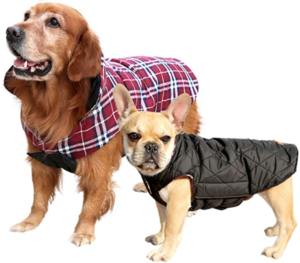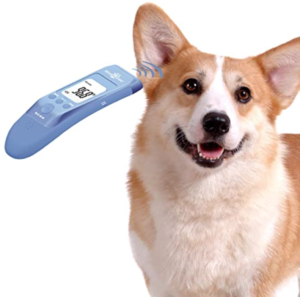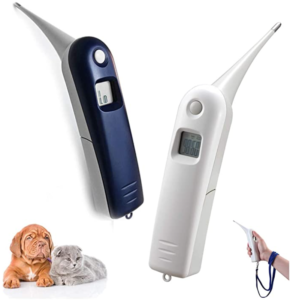You’ve probably seen your dog trembling at least once and wondered “Is this some sort of performance or my dog is getting sick?” So what exactly are tremors and are they dangerous?

Tremors are minor, uncontrolled contractions of an animal’s skeletal muscles. The entire body or particular areas can tremble. Cold temperatures aren’t the only thing that makes dogs shiver. For the most part, our furry friends shake for the most harmless reasons, but sometimes the shaking can be a cry for help!
Let’s see why our pets can tremble and how we can help them.
Getting cold
The first reason is of course the cold. Just like us, our pets involuntarily shake from the cold, this is a natural reaction. Small muscle contractions are a good way to release extra energy to warm the body and the first symptom of hypothermia. Many dogs with fine coats or low body fat, such as Greyhounds and Dobermans, catch colds very easily. Small dog breeds are also more prone to shaking outdoors than larger breeds due to their low weight.

View on Amazon
What if your dog does not tolerate the cold well? First, you can get her a sweater and even a jacket that you will wear for a walk so that she will be warm longer and the walk will last longer. Also, at home, equip the dog with its place so that after a walk it can lie down and warm up. Warm bedding, a rug, or even a blanket can help your dog cope better on a cold night.

View on Amazon
Elevated temperature
An increase in body temperature may lead to chills and shivers in the pet, combined with weakness and lack of coordination. Many people are familiar with the sensation of shaking when sick with the flu. This can usually happen with a sharp rise in body temperature and with dogs it happens exactly the same way.

View on Amazon
An increase in temperature can also be related to viral diseases and poisoning. A significant increase in body temperature in a dog can manifest itself with heatstroke, or a cerebral edema may occur, which leads to the appearance of convulsions. The dog can tremble, shake its head and arch. Heatstroke can occur in dogs on hot days outside or in a stuffy room in a closed car.
In this case, move the dog to a cool room, dampen the coat with water, and give it a lot of water to drink. When the animal comes to its normal condition, take it to the vet to prevent possible complications.

View on Amazon
Excitement
Some dogs may tremble because they are happy or excited. In such a strange way, they outwardly show their strong emotions. This tremor disappears as soon as they calm down.
In such cases, you can simply ignore the shaking and in fact enjoy your adorable doggie! But to keep your dog from getting hyperactive and overexcited, it’s best to reward him with a treat.
Stress, anxiety and fear
A dog is capable of trembling and shaking due to strong emotional experiences such as fear, anxiety and joy. These emotions are typical of the more temperamental pets. Stress is as bad for your dog as it is for you! Shivering is an independent, acute stress response that is not controlled by the dog. This is one of the types of acute stress reactions when the body releases the accumulated stress.
The first step is to try to calm down your dog and eliminate the source of stress. For example, if your dog starts shaking during a thunderstorm, try helping it calm down or play music so that the thunderstorm cannot be heard. So if you notice that your dog is scared of something, try to simply redirect his attention to something else, such as scratching its ears, giving it a treat or even playing a game of fetch. Dogs are also very sensitive to their owners, and if you remain calm in an emergency, your dog will be able to pick up on this and understand that there is nothing to worry about.
Seeking attention
Dogs are smart and they can also use their cunning on you! If you reassure and reward your dog with a treat every time your pet shakes, your pooch may be trying to make you feel overly sympathetic. Before you know it, your furry friend will learn to manipulate you!
If you notice that your dog is shaking for no reason frequently, then you should change your behaviour. Just stop giving this tremor special attention, and over time the dog will understand that his tricks no longer work and will stop trembling for no reason.
Pain or illness
Shivering can also be a sign that your dog is ill or in severe pain. Since tremors are associated with muscle contractions, your dog could have a problem with the musculoskeletal system or the nervous system. Shivering can be a symptom of a wide variety of conditions, such as distemper, neurological disease, kidney disease, hypoglycemia, inflammation of the brain and indigestion. In addition to illness, tremors can be a sign of muscle weakness. From intense training, just like in humans, your dog’s muscles can tremble after a vigorous exercise. If the shaking is confined to a specific area (for example, the right hind leg), try stretching or massaging it.
You should watch your dog for other signs of illness or injury. Pay close attention to the frequency, odor, and consistency of your dog’s stool and urine. If your dog’s shaking is accompanied by abnormal behavior or is simply not typical for your dog, then it is best to immediately contact the nearest veterinary clinic. Some diseases that cause tremors can be treated or controlled, but some cannot, such as distemper, a very serious illness that can be fatal. Shakes could also be caused by plague, another serious disease, so it is best to vaccinate your dog to prevent plague.
Old age
In older dogs, tremors of the muscles of the hind limbs may be observed, which is not always a symptom of the disease, but may be associated with general weakness with age. Of course, as dogs age, it is not uncommon for them to experience tremors due to weakening of the leg muscles, but tremors can also cause arthritis or joint pain.
If your dog is quite old and begins to tremble, it is best to check it with a vet just in case.

Convulsions
Of course, normal tremors are very different from cramps, during which the muscles contract and the dog loses mobility. If you think your pet has an epileptic seizure, take it to the veterinary clinic as soon as possible.
When to seek help if my dog is shaking?
Treating a dog for shaking depends on the reason of shaking. If your dog is cold or agitated, treatment may be simply warming up or calming down. If that doesn’t work, then maybe it’s time to see your vet.
There are some warning signs to help you know that something is wrong with your dog. Contact your vet immediately if:
- If your dog’s shaking is accompanied by other symptoms such as lethargy, anxiety, diarrhoea, lameness, or vomiting.
- If trembling interferes with the normal behavior of your dog, such as play or sleep.
- If your dog looks worried when shaking. Pay attention if at the same time she has heavy breathing, ears set far back and she’s constant licking.
- If your dog is vomiting. Depending on what she ate, the dog might shake from toxins.
Best to be on the safe side
While the vast majority of causes of tremors in dogs are relatively harmless, it’s best to check with your vet to make sure your dog is not in a bad state of trembling. Vets will be able to pinpoint the cause of the tremors and detect the disease if present. Even if you have no reason to worry about your dog trembling, checking will not make it worse, but then you will definitely be sure that everything is in order.









